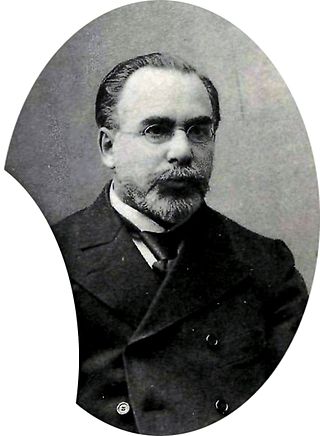
Plasmodium is a genus of unicellular eukaryotes that are obligate parasites of vertebrates and insects. The life cycles of Plasmodium species involve development in a blood-feeding insect host which then injects parasites into a vertebrate host during a blood meal. Parasites grow within a vertebrate body tissue before entering the bloodstream to infect red blood cells. The ensuing destruction of host red blood cells can result in malaria. During this infection, some parasites are picked up by a blood-feeding insect, continuing the life cycle.
Huffia is a subgenus of the genus Plasmodium - all of which are parasites. The subgenus was created in 1963 by Corradetti et al.. Species in this subgenus infect birds with malaria.
Novyella is a subgenus of the genus Plasmodium - all of which are parasites. The subgenus was created in 1963 by Corradetti et al. Species in this subgenus infect birds. It unites the avian malaria parasites with small erythrocytic meronts and elongated gametocytes.
Plasmodium bambusicolai is a species of the genus Plasmodium subgenus Novyella.

Leucocytozoon is a genus of parasitic alveolates belonging to the phylum Apicomplexa.
Avian malaria is a parasitic disease of birds, caused by parasite species belonging to the genera Plasmodium and Hemoproteus. The disease is transmitted by a dipteran vector including mosquitoes in the case of Plasmodium parasites and biting midges for Hemoproteus. The range of symptoms and effects of the parasite on its bird hosts is very wide, from asymptomatic cases to drastic population declines due to the disease, as is the case of the Hawaiian honeycreepers. The diversity of parasites is large, as it is estimated that there are approximately as many parasites as there are species of hosts. As research on human malaria parasites became difficult, Dr. Ross studied avian malaria parasites. Co-speciation and host switching events have contributed to the broad range of hosts that these parasites can infect, causing avian malaria to be a widespread global disease, found everywhere except Antarctica.

The London Underground mosquito is a form of mosquito in the genus Culex. It is found in the London Underground railway system as its name suggests, but has a worldwide distribution and long predates the existence of the London Underground. It was first described as a distinct species from Egyptian specimens by the biologist Peter Forsskål (1732–1763). He named this mosquito Culex molestus due to its voracious biting, but later biologists renamed it Culex pipiens f. molestus because there were no morphological differences between it and Culex pipiens. Notably, this mosquito assaulted Londoners sleeping in the Underground during the Blitz, although similar populations were long known.
Plasmodium buteonis is a parasite of the genus Plasmodium subgenus Giovannolaia.

Haemoproteus is a genus of alveolates that are parasitic in birds, reptiles, and amphibians. Its name is derived from Greek: haima 'blood' and Proteus, a sea god that had the power to assume various shapes. The name Haemoproteus was first used in the description of H. columbae in the blood of the pigeon Columba livia by Walther Kruse in 1890. This was also the first description of this genus. Two other genera—Halteridium and Simondia—are now considered to be synonyms of Haemoproteus.
Hematozoa is a subclass of blood parasites of the Apicomplexa clade. Well known examples include the Plasmodium spp. which cause malaria in humans and Theileria which causes theileriosis in cattle. A large number of species are known to infect birds and are transmitted by insect vectors. The pattern in which Haematozoa infect a host cell depends on the genera of the blood parasite. Plasmodium and Leucozytozoon displace the nucleus of the host cell so that the parasite can take control of the cell where as Hemoproteus completely envelops the nucleus in a host cell.
Plasmodium juxtanucleare is a species of parasite in the family Plasmodiidae. The vertebrate hosts for this parasite are birds.
Plasmodium vaughani is a parasite of the genus Plasmodium, and the type species of the subgenus Novyella. As in all Plasmodium species, P. vaughani has both vertebrate and insect hosts. The vertebrate hosts for this parasite are birds.
Plasmodium tejerai is a parasite of the genus Plasmodium subgenus Haemamoeba.
Haemoproteus columbae is a species of blood parasite related to Plasmodium and other malaria parasites.

Leucocytozoon caprimulgi is a species of the genus Leucocytozoon, a genus of parasitic alveolates. It is a rare parasite of the European nightjar. Its scarcity and the fact that it is the only one of its genus found in nightjars support the suggestion that it has crossed over from close relatives that normally infect owls.

Vasily Lakovlevich Danilewsky was a Ukrainian physician, physiologist and parasitologist. He was professor of physiology at University of Kharkiv and then at Kharkiv Medical Institute. He helped to establish the Danilevsky Institute of Endocrine Pathology Problems which he directed until his death.
Plasmodium homonucleophilum is a parasitic apicomplexan of the genus Plasmodium, subgenus Novyella whose parasitic hosts are birds.

The Sunda zebra finch is a species of bird in the family Estrildidae. It is found in the Lesser Sundas.
Plasmodium elongatum is a malaria parasite discovered by Hartman and first disclosed in Hartman 1927. Study of it has been fundamental to understanding the lifecycle of malaria along with study of P. gallinaceum, also a malaria parasite of birds. It is the type species of the subgenus Huffia.






